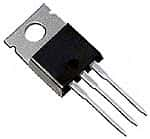Power supply manufacturers need to test their products dynamically. Instead of using fixed-resistor banks of different sizes, electronic loads allow them to simulate easily and quickly various power states. Using an electronic load, large ranges of power sources such as converters, inverters, UPSs and electromechanical sources such as batteries and fuel cells may be tested. For varying loads, electronic loads are easier to use and provide a much higher throughput compared to fixed-resistors.
For example, a handheld device may have to be tested for sleep, power conservation and full power modes. These are easier to test using a single electronic load, but may require several combinations of fixed-resistors. Additionally, an electronic load may be programmed to represent closely a real environment for a power source. This may take the form of modulation to improve the performance of power supplies by providing a faster transient response as compared to a standard power supply.
An electronic load usually consists of a bank of power transistors, power MOSFETs or IGBTs mounted on a suitably sized heat sink, and cooled with fans. An electronic circuit governs the amount of current that the power devices can draw from the power supply on test. To protect the power devices from damage, electronic loads usually have a pre-settable power limit. The manufacturer usually provides a power curve for the safe operation of an electronic load. The user must be aware of the simultaneous maximum voltage and current that can be applied to the electronic load to ensure the electronic load is not overpowered.
It is important to select a suitable electronic load for the testing. For example, a power supply rated for 12V and 30A, may never be operated at 12V and 30A continuously. While testing, the operator may run it at 12V and 5A and then at 3V and 30A. That means an electronic load of 90-100W is sufficient to test the supply.
To improve the performance of a power supply, an electronic load may be used as a high-speed current modulator. In such cases, only a fraction of the power rating of the power supply is required. When the current is modulated to the highest level, the voltage across the load is likely to be very low. As the current is modulated off, the voltage rises to its maximum. Usually, if the modulation of the current is from zero to some maximum, the load power required is one-quarter of the operating voltage times the current rating with some margin added.
Electronic loads are very useful for dynamically testing power sources. In this form of testing, the current is quickly pulsed between two states, simulating a possible sleep mode and a full power mode of a device. This pulsing can be as fast as 20,000 times a second.
Another requirement that electronic loads are adept at is low voltage testing. Although most electronic loads will refuse to operate when the applied voltage is below 1V, there are some models, which perform comfortably down to 0.6V. This is a very useful feature when testing fuel cells where the operation at low voltages is crucial.



